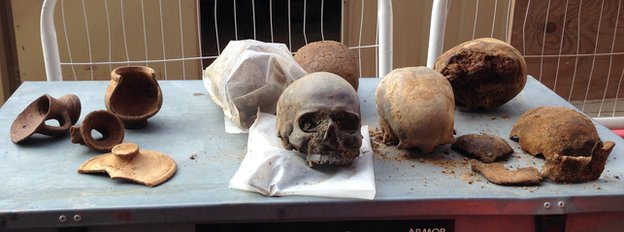The Release of NO ONE SEES ME ‘TIL I FALL
/Today we’re thrilled to announce the release of Abbott and Lowell Forensic Mysteries #2 – NO ONE SEES ME ‘TIL I FALL, our first series novella. *opens champagne and tosses confetti*
I’ve been asked many times why we wrote a novella instead of sticking to our annual hardcover release schedule. In the end, the answer was twofold. We wanted to give our readers content while they waited the eleven months between DEAD, WITHOUT A STONE TO TELL IT and A FLAME IN THE WIND OF DEATH. I’m a series reader myself, and I know how hard it can be to get involved in a series and then have to wait six or twelve months for the next installment. We wanted to fill that gap with a short case that falls between the longer and more complex cases in the novels. But we also wanted to introduce the series to new readers who might be willing to try a new author in a short piece, and who might then be interested in continuing the series with us. It’s an experiment of sorts—instead of putting our money and effort into more classic marketing methods, we decided that the best form of marketing was series content because that was what our readers really wanted. As an added bonus, for the first time, the first three chapters of A FLAME IN THE WIND OF DEATH are included to give you a taste of what’s to come in the series.
Huge thanks go to Ann who bravely volunteered to do all the formatting required (and it was A LOT!) to get the novella into proper electronic publishing format. It looks great, and I had absolutely nothing to do with it. :)
We wanted to include a sneak peek at the novella with the first chapter below (please don't mind the lack of indents; HTML likes to strip them all out...). Enjoy!
NO ONE SEES ME ‘TIL I FALL
CHAPTER ONE: EXPOSURE
Exposure: a measure of the amount of light hitting the surface of a light-sensitive photographic material while creating a latent image.
Friday, 1:37 p.m.
Boston University, School of Medicine
Boston, Massachusetts
Massachusetts State Police Trooper Leigh Abbott hesitated at the open door to the laboratory. Her gaze instantly found her onetime partner—Boston University forensic anthropologist Dr. Matthew Lowell—huddled with his graduate students around an examination table across the room. Tall and dark, his physique spoke of long hours spent at the oars out on the Charles River, and he stood a full head above his students, except long, lanky Paul Layne. The discussion was too quiet for Leigh to hear distinct words, but there was a thread of remorse in Kiko’s tone, followed by cool logic in Matt’s. Between Juka and Paul, she caught a glimpse of smooth ivory bones on the stainless steel table. The group was hard at work, examining human remains recovered from the charnel house beneath Boston’s historic Old North Church.
Guilt coiled with anticipation in her gut. It had only been a few weeks since she’d first interrupted their work to pull them into a case. And yet here she was, proverbial hat in hand, once again.
She tapped two knuckles against the door frame.
Matt looked up from beneath the slightly shaggy hair that tended to fall into his eyes—a tactic she knew he employed to hide the twisted scar that ran from near his right eyebrow into his hairline. His expression warmed as their eyes met. “Trooper.” He raised two fingers to his temple in a brief salute, the formality of the gesture tempered by a wide grin. “This is a surprise.”
“Can’t I just drop by the lab?” As Leigh approached the group, Kiko Niigata, Matt’s senior grad student, stepped aside, making a place for her at the table. The group closed ranks around her, bringing her naturally into their circle. “What are you working on?”
“More remains from the charnel house,” Kiko, a slender woman with delicate Japanese features, pointed to the tiny, anatomically-arranged skeleton, topped by a blossom of skull fragments.
“It’s a newborn baby who probably died during childbirth, possibly along with its mother.” Juka Petrović, stocky and solid, with the dark coloring of his Bosnian ancestors, gave her a short nod of greeting and a small smile. Always restrained, Juka’s acknowledgement was the equivalent of the exuberant Paul greeting her with a trumpet fanfare.
“What happened to the skull?” In her peripheral vision, Leigh could see Paul’s expression of cocky expectation, his gaze fixed on her face as if trying to read her mind. He knows something’s up.
Matt picked up a tiny, gently curving piece of bone rimmed by ragged edges. “Nothing sinister. The fetal skull is actually comprised of forty-four unfused pieces. It’s the flexibility of the unfused skull that allows passage through the birth canal. Later in life, the progression of skull fusion helps us determine age.” He set the bone back into place in the human jigsaw puzzle. “Kiko’s going to do the skull reconstruction, and then try to give our baby a face.”
Kiko stroked an index finger over the curve of a tiny eye socket. “It’s going to be a tough reconstruction because of all the suture lines, but Matt’s willing to let me try.”
Matt patted her shoulder. “It always bothers you to work with kids.”
“And babies are the worst.” She frowned down at the table. “So many died so young back then.”
“Enough with the small talk,” Paul finally exploded, drawing everyone’s eyes. “You have a case for us, don’t you?”
Leigh’s gaze shot to Matt as confusion and then suspicion streaked across his face. She closed her eyes, guilt suddenly weighing heavily across her shoulders. She’d known there was a good chance Matt would misconstrue her arrival, especially considering the very private dinner they’d enjoyed last week—a dark restaurant, a good meal, fine wine, and a warm goodbye to end the evening. An evening his students and her sergeant were totally unaware of. “Well, now that you mention it . . .” she said weakly.
Matt stepped back from the exam table, his eyes narrowed as he considered her. “I should have seen it.”
“Seen what?”
“You.” One extended hand panned down, then back up her body. “This isn’t a social call. You’re in cop mode—hair tied back, plain business suit, sensible shoes, no jewelry.” He crossed his arms over his broad chest and Leigh felt the space between them grow wider even though neither had moved. “I guess I called it right after all. What have you got for us, Trooper?”
Guilt started to dissipate as irritation rose. She knew how well they worked together . . . once they struggled to get on the same page. “Now don’t go getting all out of sorts before I’ve even had a chance to bring you up to speed.”
“I knew it!” Paul fist-pumped the air. “We’re back, baby!”
“You really have a case for us?” Kiko asked. “Seriously?”
“Seriously. Interested?”
“Damn straight.” Paul did a quick-footed hip-hop shuffle. “We’re back to crime fighting. Cool!”
Leigh turned to Juka to find his gaze fixed on Matt, as if trying to temper his own response based on his supervisor’s. “Juka? Are you willing to help out?”
The young man shifted uncertainly from foot to foot. “I’d be interested in another case. But only if Matt is. This should be his decision.”
“I agree,” Kiko said. “I’m happy to get involved again, and I know we were a valuable part of the last investigation. But this has to be Matt’s call. He’s the one who’ll end up in court as the expert witness at the end of the case, not us.”
Taking a deep breath, Leigh faced Matt. His hazel eyes were fixed unblinkingly on hers and his face was carefully blank. “So . . . can I give you a rundown on my new case?” she asked cheerfully. She tried to match her words with an enticing smile, but it slipped when he continued to silently stare. “Matt?”
Instead of answering, he took her arm, drawing her toward his desk and out of earshot of his students. “You had this planned all along didn’t you? You were going to use my students as leverage to get me on board. You knew they’d be interested, especially Paul. And you banked on their enthusiasm to drag me in whether I wanted to or not.” He turned his back to the young people across the room, the only privacy afforded in the big, open lab. “Couldn’t you have trusted me with the truth? I don’t like games, Leigh. After all we’ve been through, I expect better from you than this.”
Her head bowed, she rubbed a hand over the back of her neck, trying to ease some of the prickly stress suddenly lodged there. “I’m not playing games. I just really need your help. And I felt desperate enough to try to force your hand.” She looked up when his hand closed over hers, pulling it from her neck to hold it in his, his thumb softly stroking over her skin.
“Then just ask me.”
His gentle tone had her blinking up at him in surprise. “Really?”
“Really.”
“Even after the last time?” Their successful first case together had brought them very much to the attention of the media and her superiors. But this wasn’t the essence of her question—there were personal elements in play here they were both aware of, even if they seldom spoke of them.
Her gaze flicked up over his dark hair where a new scar joined the others cruelly carved into his flesh. “You got shot, hit on the head, and then we were both nearly killed by a maniac. And all those victims. Not to mention I practically blackmailed you into coming on board in the first place by threatening to take the case to a rival anthropologist.”
“You didn’t blackmail me.”
She grimaced. “Actually, I did. I knew walking into the Old North that you didn’t like Trevor Sharpe, so he was my last ditch ace-in-the-hole if you wouldn’t sign on voluntarily.” She tried to tug her hand from his, surprised when he didn’t let go in disgust, and then shocked when he gave a short bark of laughter. “You’re not mad?”
“How can I be mad when it got us here? Even I have to admit you were very resourceful. You knew what you wanted and went after it using any and all means at your disposal.” He gave her hand a quick squeeze and then surreptitiously dropped it. “But next time, why don’t you just pick up the phone. By this point, we can cut right to the chase. Now, how about you fill us in?”
They rejoined the group, the three students watching them warily until Matt said, “Leigh’s going to tell us what she knows. Then I assume we need to get out to a site right away? They’re holding it for us?”
“Yes.” She loosed a long sigh, her first relaxed breath since setting eyes on her victim. She pulled her notepad from her blazer pocket, flipping it open to the relevant details. “A call came in over the tip line yesterday reporting a body dumped in Lawrence’s municipal landfill.”
“A call? From who?” Matt asked.
“People don’t usually leave their name on the tip line. Anonymity is the whole point. But it sounded like a girl.”
“How do you find a body in a landfill?” Juka asked. “That must be a huge endeavor.”
“Clearly they’ve found it or Leigh wouldn’t be here,” Matt interjected. “I’m betting they used a cadaver dog.”
“Got it in one. They searched all yesterday afternoon without one with no luck. So this morning they brought in two dogs. One found the body stuffed in a garbage bag near the surface.”
“I bet it blended right in like that.” Paul pushed a hand through his dark blond hair, making it stand up in small spikes. “Without the phone tip, it might never have been found.”
“It was clearly a recent addition, but would have been completely buried in another day or two. I was called in and I only needed one look to know that I needed you guys.”
“There’s no way the body’s in good shape,” Matt said. “Was the bag sealed?”
“It was until the local cops cut the bag open to confirm they had a victim.”
Matt winced. “We need to move fast then. Birds and bugs infest dump sites in a big way.”
“I left several officers with the remains, keeping the birds away.”
“Bugs are the bigger contaminant at this point.” Matt quickly moved through the lab, pulling equipment off shelves and out of drawers. “Get your field kits. Full Tyvek and sampling supplies.” He glanced at Leigh. “I’ll throw in coveralls for you too. You can’t go rooting through garbage dressed like that.” He paused for a moment, tapping an index finger against the benchtop. “I suspect a body bag might not do it for this one. Paul, you know that really big plastic transport container?”
“The one stored down the hall?”
“That’s the one. Get it. We’ll need it to hold the body bag.” He turned back to Leigh. “Call in a morgue van. If we transport the body in my SUV, I’ll never get the smell out.”
“They’re already on alert and waiting for my call. And you’re right. I don’t think a body bag will do it.”
Matt stopped short, glancing back over his shoulder at her. “How bad is it?”
Leigh had spent the last hour trying to forget what she’d seen inside that plastic bag. “I’d use the word ‘soup’ but then I might never eat lunch again.”
Matt nodded as if this was what he expected, and continued gathering his things and stuffing them into a backpack. “The body won’t necessarily have been there long. Heat produced by landfill sites combined with warm weather and possible direct sunlight would turn the bag into an oven, speeding up decomp. It’s going to be a putrefied mess. But that will probably save us maceration time.”
Guilt and some of the stress lifted from Leigh’s shoulders as she watched Matt and his students efficiently move around the lab, getting ready to start a new case.
Together they’d stopped a killer who’d flown below the radar for years, until she’d joined forces with Matt and his team. After the case ended, she thought their work together was done. But it looked like she was wrong.
The team was back.
NO ONE SEES ME ‘TIL I FALL is available today on Amazon for the Kindle. But you don’t need a Kindle to read it—the free Kindle app for PC, Mac, Android, and iOS products is available here. And if you enjoy the novella, we’d love it if you reviewed it on Goodreads and Amazon. Happy reading!








 12.1%
12.1%